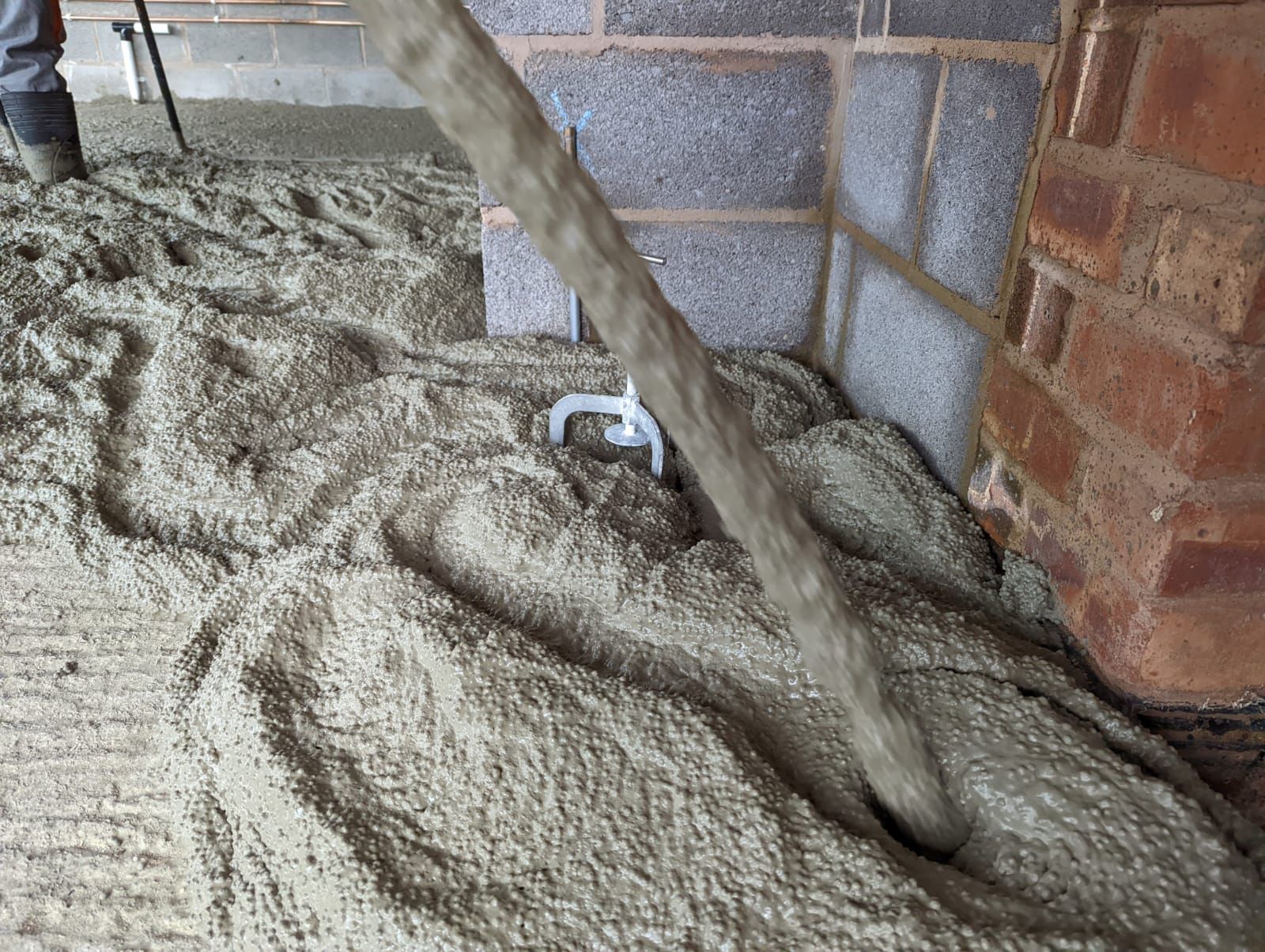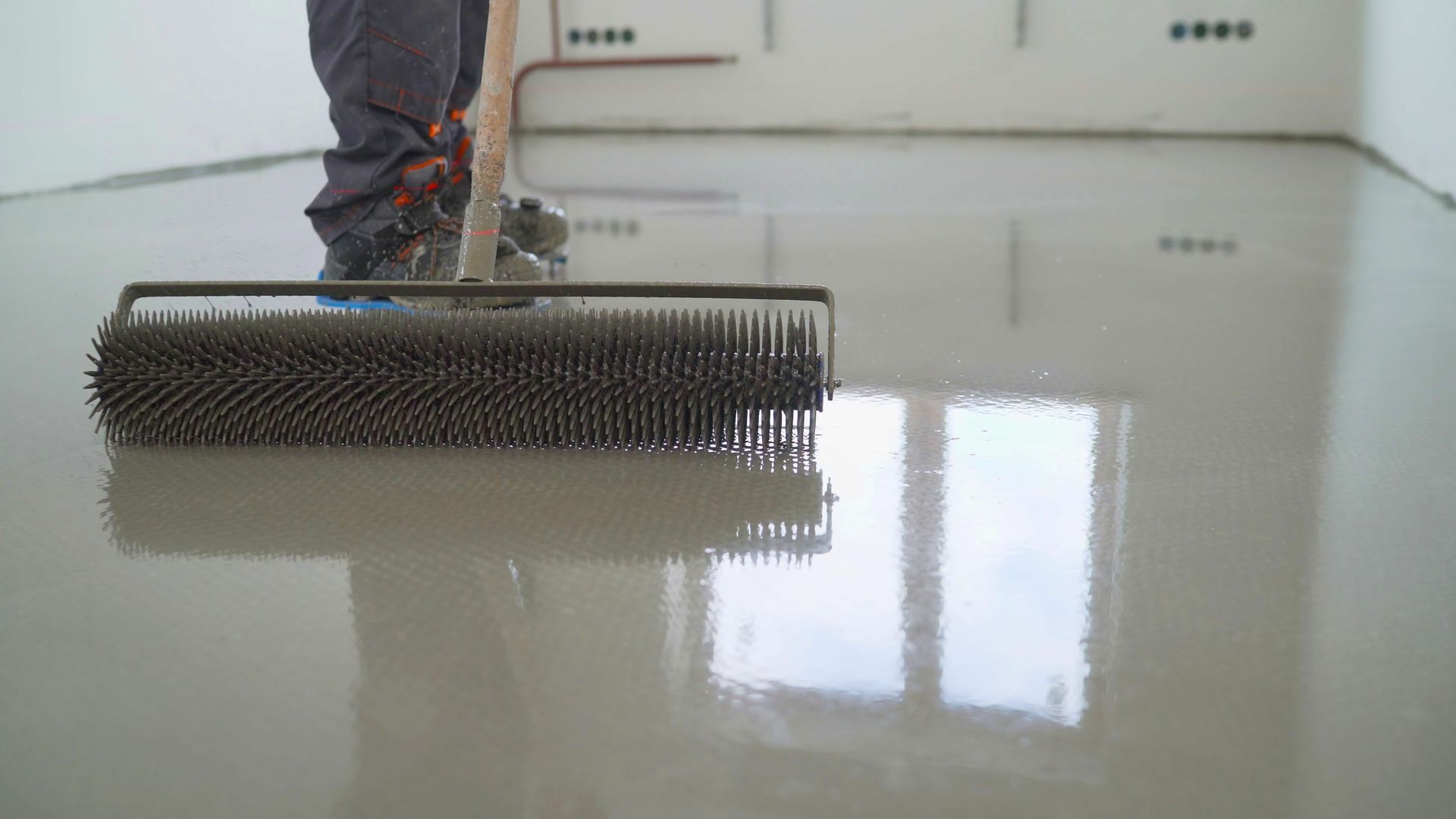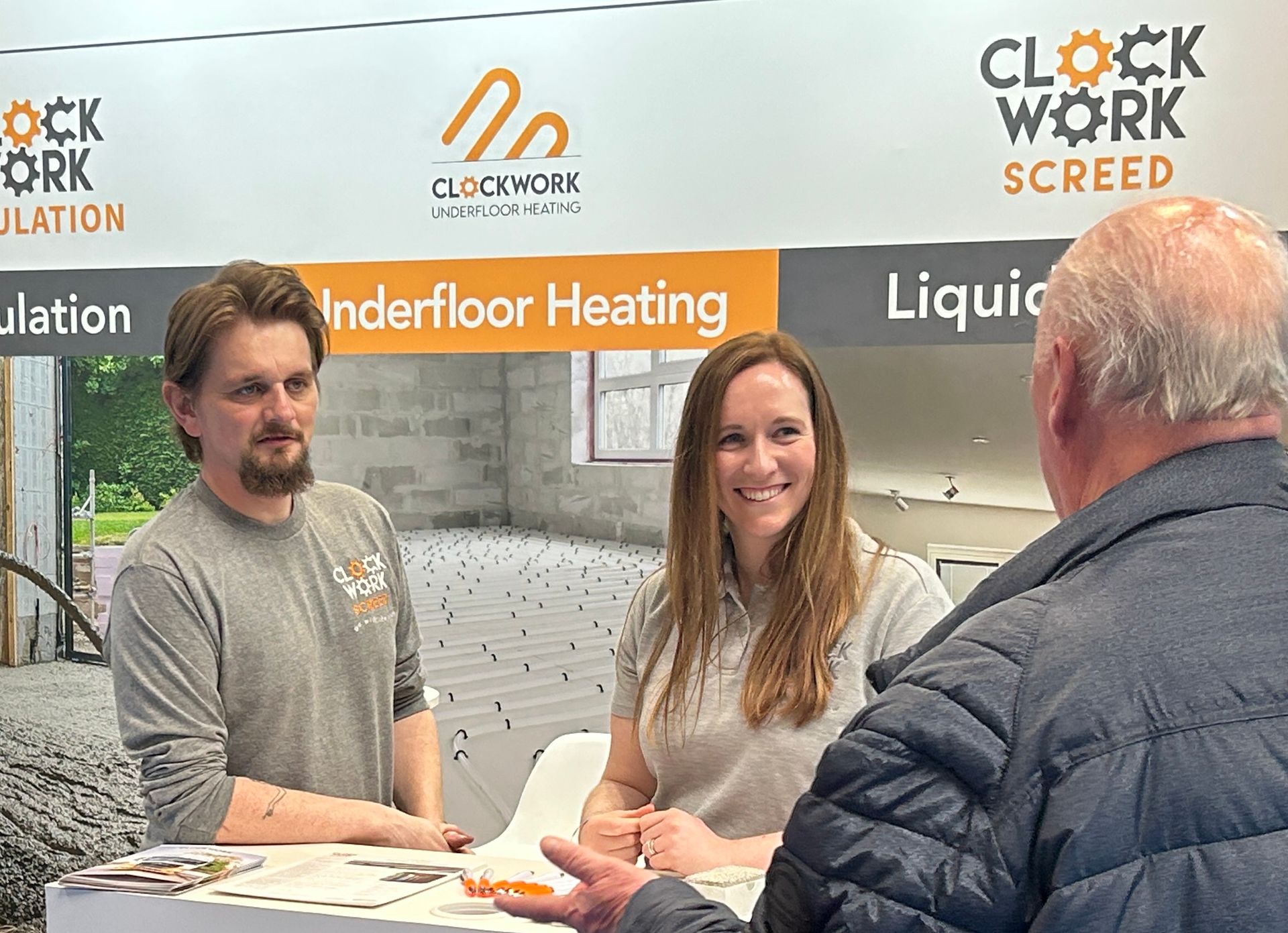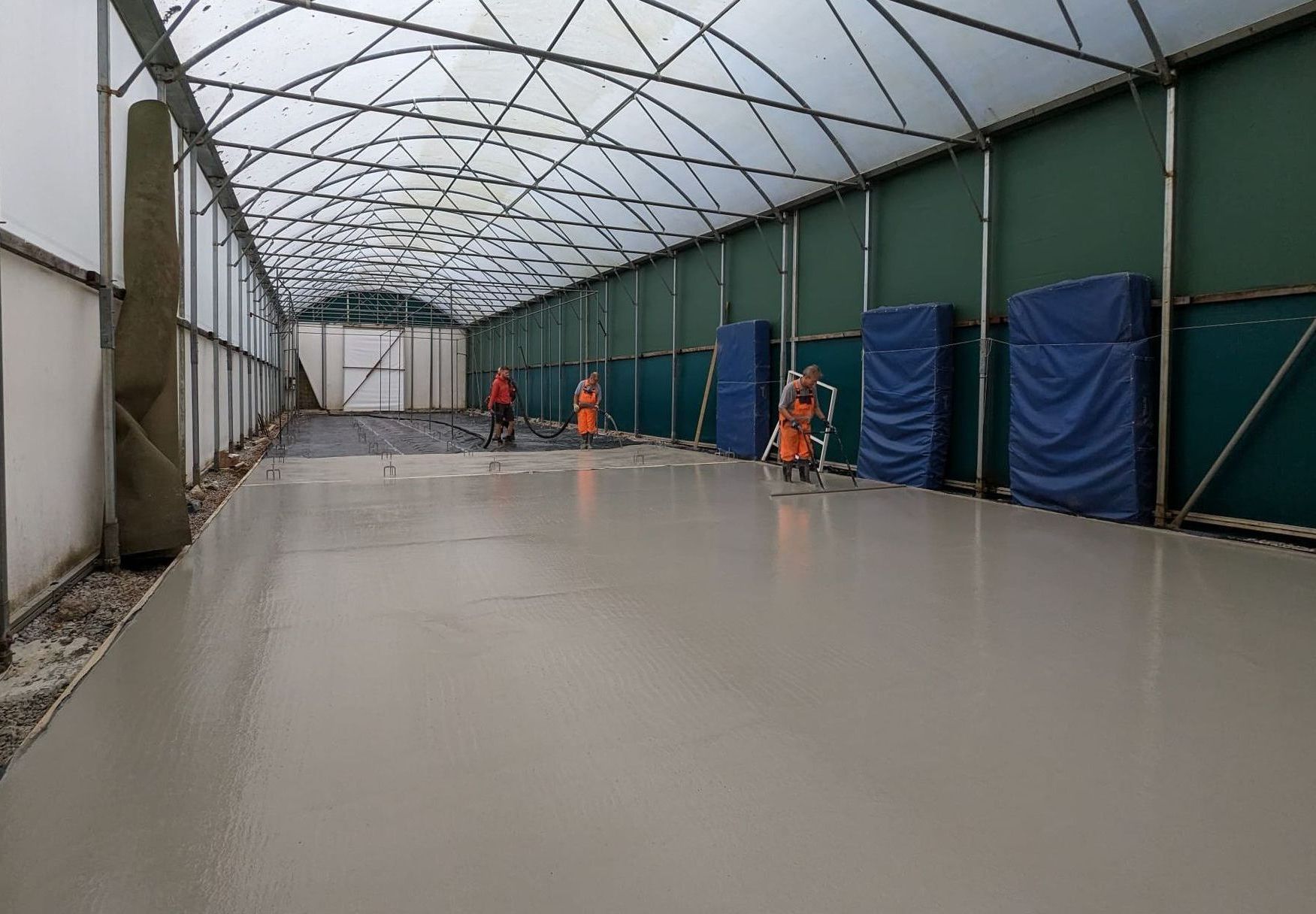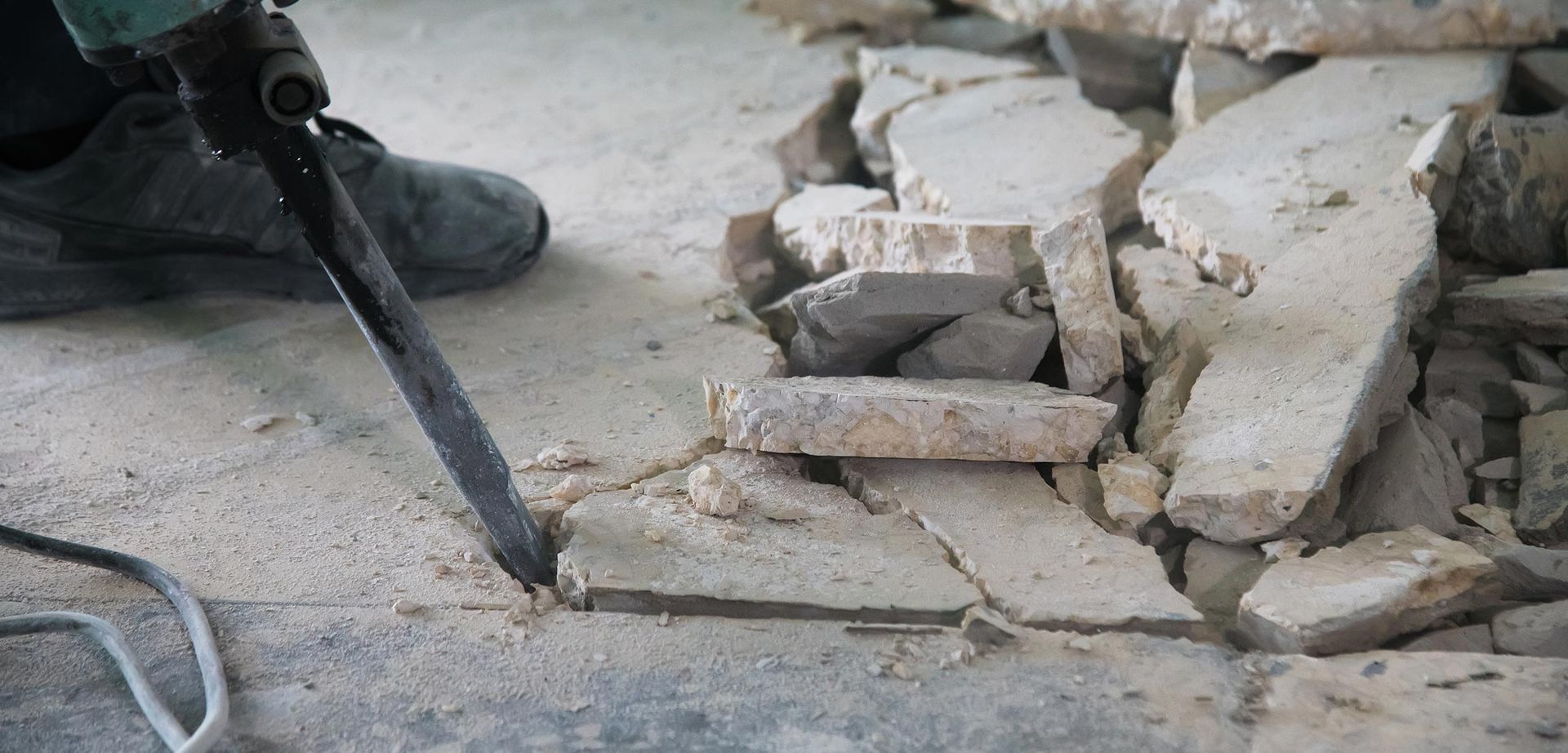All you need to know about cementitious liquid floor screed aftercare
Clockwork Screed are experts in liquid floor screeding based in the North West. We have an enviable reputation for laying liquid floor screed to the highest standard and offering an exceptional customer experience.
But what happens once we leave site? The immediate aftercare of freshly laid liquid floor screed is an essential part of futureproofing your new floor and preparing it for the covering of your choice.
To help you achieve the best quality flooring possible, we have put together our Cementitious Liquid Floor Screed Aftercare Guide.
The Clockwork Screed Cementitious Liquid Floor Screed Aftercare Guide
Timing for footfall
A light footfall is possible on liquid screed after around 24 to 48 hours, even maybe the morning after the screed was installed, but full site traffic should be prohibited until at least 2-3 days after the screed has been laid.
Should site traffic be necessary, the flooring can be temporarily protected using plywood sheets but these must be removed as soon as the site traffic stops to allow sufficient drying.
Curing of liquid screed
The curing of liquid floor screed is essential for ensuring the flooring is strong and durable. Curing is about hydration and is the process that provides the adequate moisture, temperature and time needed for the flooring to develop its necessary properties as a quality product. Curing cannot be rushed.

Liquid floor screed should be left to cure for the initial 24-48 hour period after installation. While the use of traditional impermeable membranes is not necessary, in this critical period rapid moisture loss should be avoided. The area should not be subjected to any traffic.
Liquid floors exposed to direct sunlight during the first 24-48 hours will not cure correctly. For this reason, south facing windows and glass doors should be covered during this period. Once the 48 hour period has passed, the windows and doors can be opened.
Drying liquid floor screed
Environmental factors will impact drying time. These include the temperature, ambient humidity and air fluctuations. The rule of thumb is that liquid floor screed dries at a rate of 1mm a day for the first 40mm of laid screed, with an additional 0.5mm per day if the depth of the screed exceeds 40mm. If the temperature is above 20°C and humidity is low, less drying time will be needed.
After 7 days, if the screed has been laid on an underfloor heating system this can be used to help accelerate the drying process by building the heat gradually 5°C per day. The force drying of cementitious floor screed is also possible using heaters and dehumidifiers. Floor finishes can be applied to cementitious liquid floor screeds with moisture levels at 2.5%CM. For anhydrite screeds the moisture level must be 0.5%CM.
Floor preparation
Unlike anhydrite liquid screeds, the removal of laitance by sanding isn’t necessary for cementitious floor screeds. Building residue should, however, be removed before applying a floor finish.
Other preparations include making sure the floor is clean and free of any chemicals that might impact the adhesive used to apply the floor finish. There should be no fractures other than joints that have been planned, and the floor should be clear of dust, debris and any contamination such as mud, building adhesive or bricklaying mortar.
Choose Clockwork Screed for your cementitious floor screed installation
For more information on how Clockwork Screed can help with your flooring project, get in touch using our online form or by calling 0161 546 6945.
